The XPG Core Reactor II VE 850W PSU Review: Our First ATX 3.1 Power Supply
by E. Fylladitakis on May 2, 2024 10:00 AM EST- Posted in
- Cases/Cooling/PSUs
- PSUs
- 80Plus Gold
- XPG
- ATX v3.1
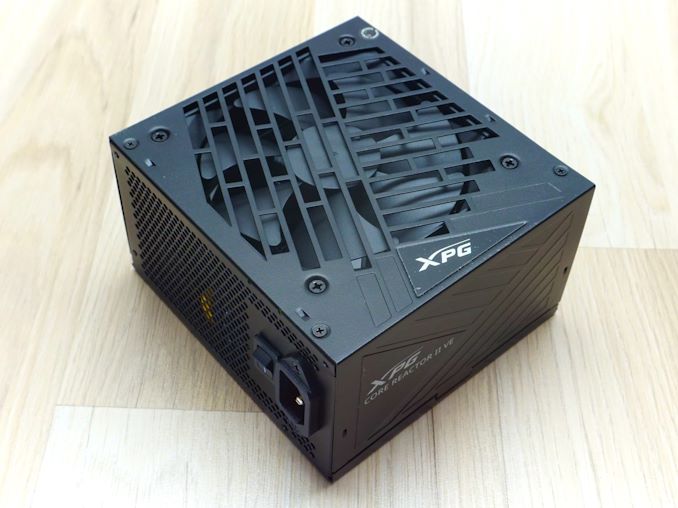
Just over 18 months ago, Intel launched their significantly revised ATX v3.0 power supply standard, and with it, the 600 Watt-capable 12VHPWR cable to power video cards and other high-drain add-in cards. The release of the standard came with a lot of fanfare and excitement – the industry was preparing for a future where even flagship video cards could go back to being powered by a single cable – but shortly after, things became exciting again for all the wrong reasons.
The new 12VHPWR connector proved to be less forgiving of poor connections between cables and devices than envisioned. With hundreds of watts flowing through the relatively small pins – and critically, insufficient means to detect a poor connection – a bad connection could result in a thermal runaway scenario, i.e. a melted connector. And while the issue was an edge case overall, affecting a fraction of a fraction of systems, even a fraction is too much when you're starting from millions of PCs, never mind the unhappy customers with broken video cards.
So the PC industry is taking a mulligan on the matter, quickly revising the ATX specification and the 12VHPWR connector to fix their design flaws. In its place we have the new ATX v.3.1 power supply specification, as well as the associated 12V-2×6 connector, the combination of which are intended to serve the same goals, but with far less of a chance of errant electricity causing damage.
Ultimately, the combination of the two new standards has required backwards-compatible changes on both the device (video card) side, as well as the power supply side. And as a result, power supply manufacturers are now in the process of releasing ATX v3.1-compliant PSUs that implement these revisions. For PSU vendors, the changes are relatively trivial overall, but they are none the less important changes that for multiple reasons, they are making sure to promote.
Getting down to business, the first ATX v3.1 power supply to enter our testing labs comes from ADATA sub-brand XPG, a prolific player in the PSU market. XPG recently expanded its product lineup with the introduction of the Core Reactor II VE series, the company's first foray into ATX 3.1-compliant PSUs. As a direct successor of the Core Reactor II series, the Core Reactor II VE is a relatively simple 80Plus Gold unit that distinguishes itself with its straightforward design, aimed at providing steady performance without the high expense.
In today’s review, we are taking a look at the 850W version of the Core Reactor II VE series, which is, for the time being, the most powerful ATX 3.1 unit XPG offers.
| XPG Core Reactor II VE 850W Power specifications ( Rated @ 40 °C ) |
|||||
| RAIL | +3.3V | +5V | +12V | +5Vsb | -12V |
| MAX OUTPUT | 22A | 22A | 70.8A | 3A | 0.3A |
| 120W | 850W | 15W | 3.6W | ||
| TOTAL | 850W | ||||
| 80PLUS RATING | Gold | ||||
| AC INPUT | 100 - 240 VAC, 50 - 60 Hz | ||||
| MSRP | $119 | ||||
Packaging and Bundle
The XPG Core Reactor II VE 850W PSU features robust and visually appealing packaging. The box, made from durable cardboard, is adorned in a vivid red color and prominently showcases an image of the unit on the front. To ensure the PSU is well-protected during transport, it is securely encased in dense packaging foam.
The bundle is straightforward, containing just essential components such as mounting screws and the necessary AC power cable. Additionally, it includes several decorative stickers to add a touch of personalization.
This PSU features a fully modular design, which enables the removal of all DC power cables, including the 24-pin ATX connector. The cables are uniformly black, from their connectors to the wires, and are designed without sleeving, resulting in a consistent visual aesthetic.
| XPG Core Reactor II VE 850W | ||
| Connector type | Hardwired | Modular |
| ATX 24 Pin | - | 1 |
| EPS 4+4 Pin | - | 2 |
| EPS 8 Pin | - | - |
| PCI-E 5.0 (12V-2×6) |
- | 1 |
| PCI-E 8 Pin | - | 3 |
| SATA | - | 6 |
| Molex | - | 2 |
| Floppy | - | - |
The XPG Core Reactor II VE 850W ATX 3.1 PSU
External Appearance
The XPG Core Reactor II VE 850W PSU is encased in a chassis that measures 86 mm × 150 mm × 140 mm (H × W × D), aligning with the standard ATX dimensions. This relatively compact size enables the power supply unit to fit seamlessly into most tower PC cases. XPG’s engineers were forced to use a 120 mm fan for cooling, as a larger fan does not fit in such a small chassis.
Opting for a subtle aesthetic, the Core Reactor II VE 850W PSU features a sleek matte black finish. The design maintains a refined appearance, enhanced by embossed geometric patterns on the sides and an abstract geometric fan cutout that adds visual interest. The top of the unit displays a detailed sticker that provides its electrical specifications and certifications.
The front side of the XPG Core Reactor II VE 850W PSU hosts only the standard on/off switch and AC receptacle. The modular cable connectors are neatly organized on the rear of the unit, facilitating easy and mistake-free connections. Although the connectors are not color-coded, they are enclosed by a clearly printed, bright white legend on the chassis, which assists in precise cable installation.
Internal Design
The XPG Core Reactor II VE 850W PSU is equipped with a Hong Hua HA1225H12F-Z 120 mm fan, which includes an FDB (Fluid Dynamic Bearing) engine. This type of fan is favored by manufacturers of high-quality PSUs. The fan in this model can reach a maximum speed of 2200 RPM, an impressive figure for a 120 mm fan. The manufacturer’s website states that there should be a 2400 RPM fan installed but that probably was a typographic error.
The XPG Core Reactor II VE 850W ATX 3.1 PSU is manufactured by Channel-Well Technologies (CWT), a renowned OEM known for its capability in producing mid to high power output PC power supplies. CWT’s reputation as a respected OEM is firmly established, with their platforms being integral to some of the most popular power supply units on the market. We can also see that the same exact platform was used for the Core Reactor II 850W ATX 3.0 PSU, verifying that the difference between the ATX 3.0 and ATX 3.1 standards are very subtle, primarily reduced to the length of the PCI-Express 5.0 connector sense pins and their configuration. If anything, the quality went down a bit compared to the ATX 3.0 version of the series, as we can see that higher quality passive components were being used.
The Core Reactor II VE 850W PSU employs well-established topologies, ensuring reliable performance without unexpected deviations. The input stage of the power supply features a more robust transient filter than the ATX design guide baseline, equipped with four Y capacitors, two X capacitors, but just one filtering inductor, followed by two bridge rectifiers on their dedicated heatsink. A copper sheet shields the filtering stage from the rest of the unit. The Active Power Factor Correction (APFC) circuit active components lie on the primary heatsink along the edge of the PCB. The active APFC components are two 33N60M2 MOSFETs and a diode, along with a filtering inductor and a massive 400V/680μF capacitor from Elite.
In the primary inversion stage, the Core Reactor II VE 850W PSU utilizes a half-bridge LLC topology with main switchers (25N60EFL) mounted on a dedicated heatsink, a typical setup in contemporary power supplies for its cost-effectiveness and reliability. The secondary stage conversion features eight OnSemi NTMFS5C430N transistors on a vertical daughterboard, delivering a single 12V output. The 3.3V and 5V rails are managed by DC-to-DC conversion circuits on another daughterboard.
On the secondary side, the PSU incorporates a mix of both electrolytic and solid-state capacitors from Elite and CapXon, both of which are known but are not considered to be amongst the most premium capacitor manufacturers. The ATX 3.0 version of the series featured capacitors from Japanese manufacturers instead.


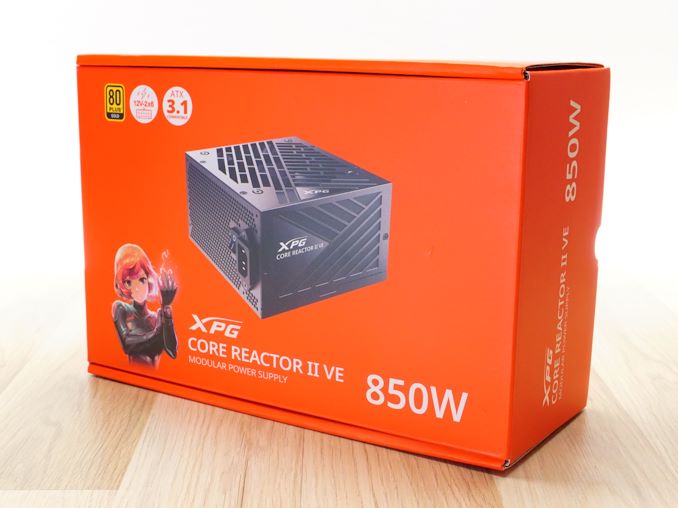
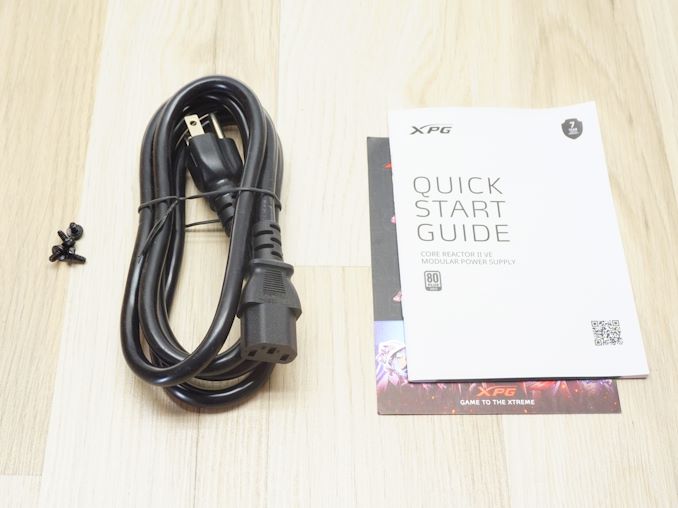
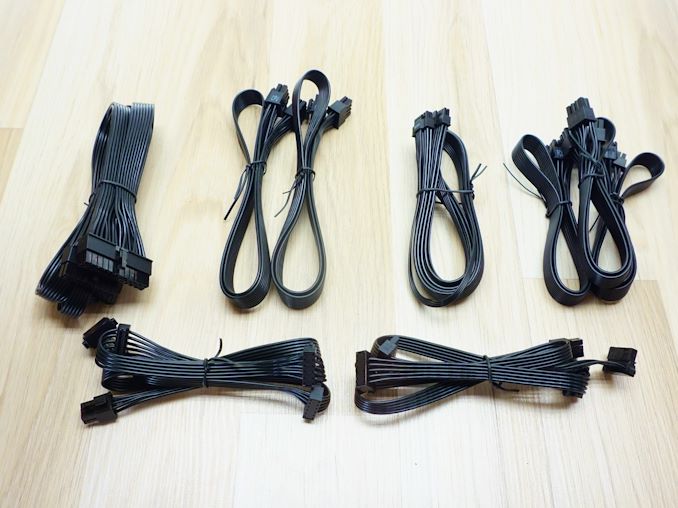

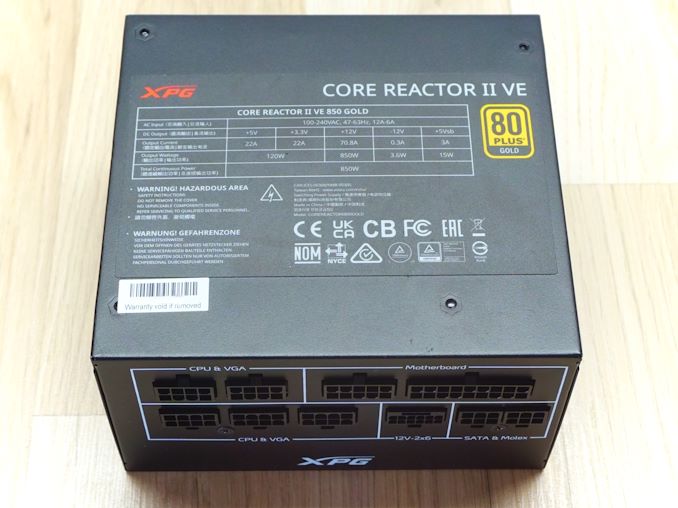
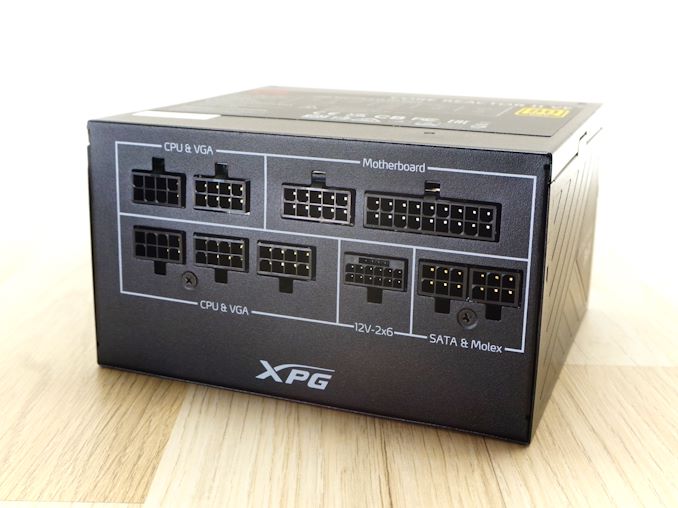

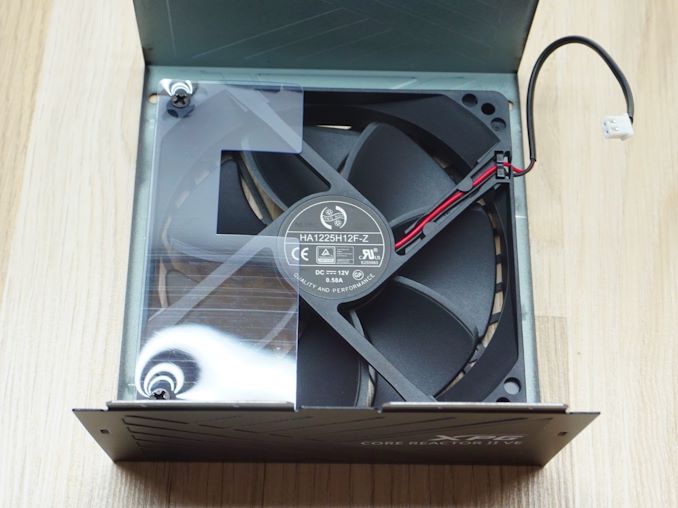
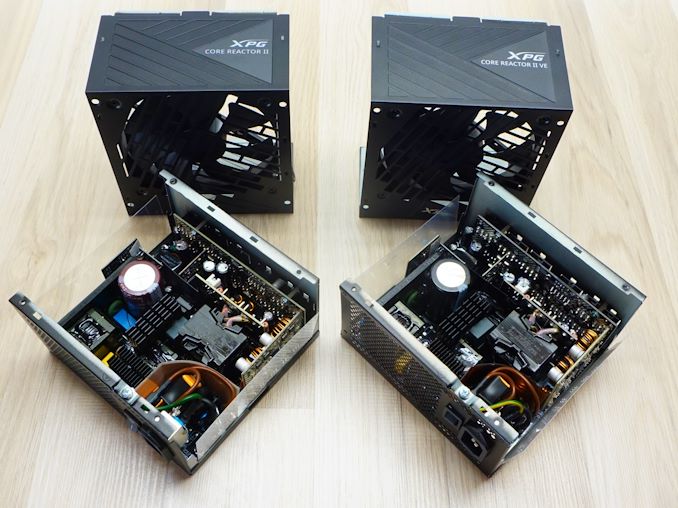
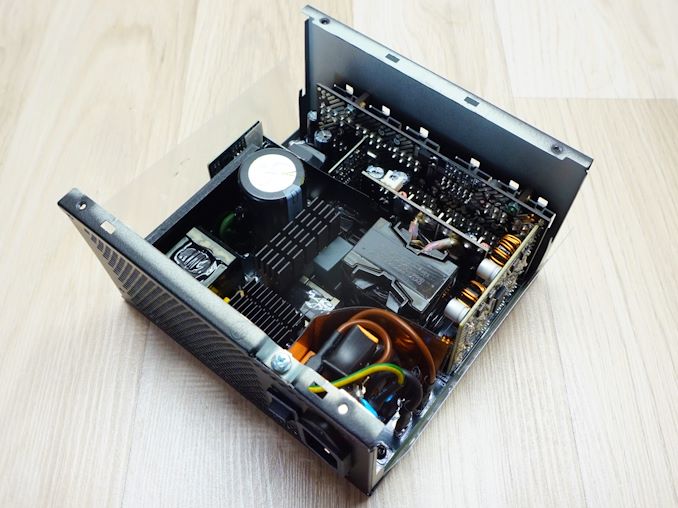
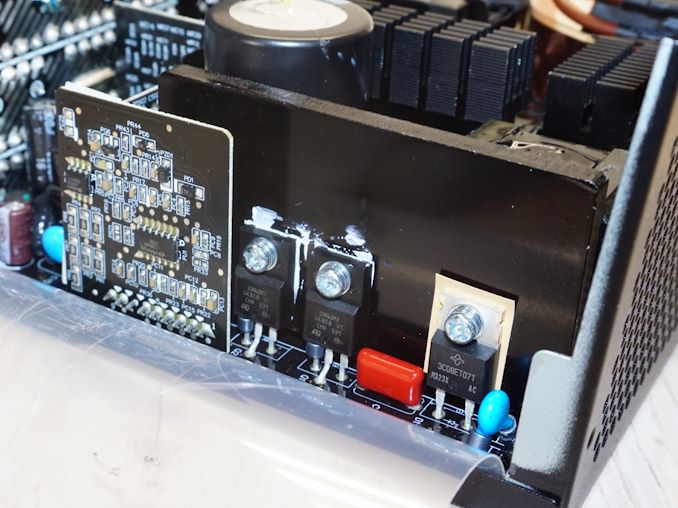
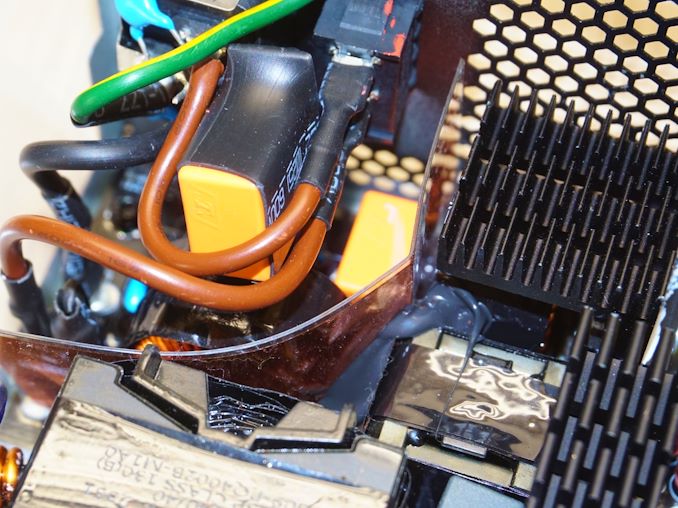
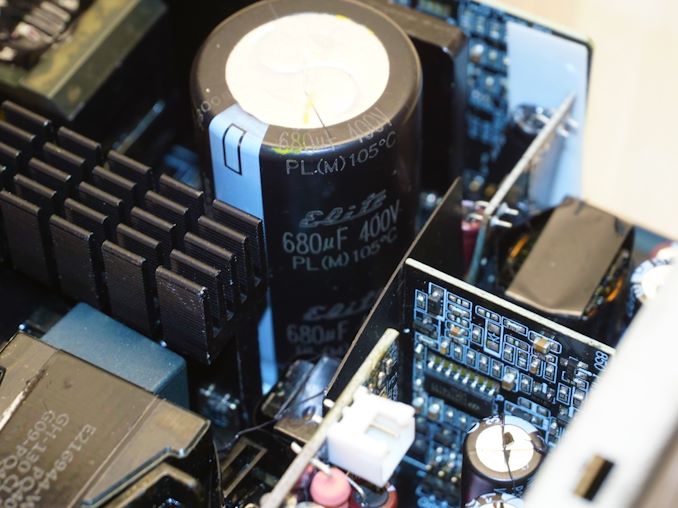








31 Comments
View All Comments
Reflex - Friday, May 3, 2024 - link
Tesla announces a lot of unverifiable things. No point in doing their PR for them. Replyzodiacfml - Saturday, May 4, 2024 - link
true but they can revolutionize efficiency in datacenters as they have existing solar and battery products and services. it's just a matter of scale which is likely the cause of delays, like they can't simply ask Nvidia to make 48 volt power AI graphics cards-unless Tesla buys so much or convince other tech giants to go 48V ReplyTheinsanegamerN - Monday, May 6, 2024 - link
That would require sweeping industry wide changes and break decades of compatibility. Fat chance that happens. Replyballsystemlord - Thursday, May 2, 2024 - link
@Ryan , the "hot box testing" section has 2 images of the conversion losses and 0 images of the fan curve. Please fix this. Thanks! ReplyRyan Smith - Friday, May 3, 2024 - link
D'oh! Thank you for catching that.Unfortunately that's a problem with the image itself (right image, wrong data), and needs to be regenerated by hand. So I'm not able to immediately fix it. I'll have Tracy upload the correct one as soon as possible. Reply
Ryan Smith - Saturday, May 4, 2024 - link
And fixed. Replywr3zzz - Thursday, May 2, 2024 - link
What's the safest way to use previous gen 1000W PSU for RTX4090/5090? ReplyrUmX - Friday, May 3, 2024 - link
For 5090, we don't know. That GPU didn't release yet. ReplyRyan Smith - Friday, May 3, 2024 - link
Make sure the cable you're using is making very good and tight connections at both ends.If there is a problem, it's much more likely to occur on the video card end of things, and those are already by and large using the new 12V-2×6 connector since it's such a quick swap. Reply
shabby - Friday, May 3, 2024 - link
Keep a fire extinguisher close by... Reply